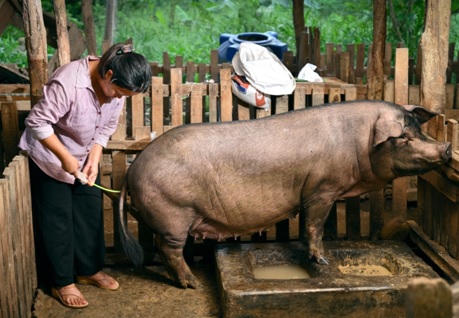SATURDAY, MAY 10, 2025
- Home
- AI technology boosts pig production in Nagaland
AI technology boosts pig production in Nagaland
Published on Jan 17, 2025
Share

Artificial insemination (AI) in pigs (Credit: ICAR Nagaland Centre)
- KOHIMA — The adoption of artificial insemination (AI) technology in pigs is ‘gaining momentum’ in Nagaland, according to the ICAR Nagaland Centre.
- This was highlighted as one of the latest ‘success stories’ of the Indian Council of Agricultural Research (ICAR) on Friday.
- The ICAR Complex for North Eastern Hill Region, Nagaland Centre, Medziphema, in its report, stated that it has successfully scaled up AI technology for pigs in Nagaland and Assam.
- Since 2016-17, the centre has inseminated 6,120 pigs across 5,791 farms, producing 43,243 piglets with average litter sizes ranging from 8.28 to 10.06.
- In addition, 23 entrepreneurs have been trained in AI in Dimapur, Kohima, Peren, Chümoukedima, and Phek districts.
- The ICAR has been implementing the All India Coordinated Research Project on pigs at the ICAR Nagaland Centre, Medziphema, since 2009 with an aim at improving pig productivity through the introduction of superior pig germplasm. The artificial insemination technology was developed and standardised for local farmers as part of this initiative.
- “While less than 0.01% of breedable female pigs in India are bred through AI due to infrastructure and policy limitations, its adoption in Nagaland has gained momentum as farmers have seen positive results. AI reduces disease transmission risk, enables rapid genetic improvement, and reduces the need for breeding boars. This technology is now in high demand among farmers,” it stated.
- Stating that AI technology in pigs holds great promise for improving sustainable pig production in the region, it noted that there is an urgent need to transfer this technology to every district.
- Nagaland's requirement for pork meat and its pig production have been on the shortfall for decades.
- According to the Sample Survey Report of 2020-21, the state produces 45.07% of the total requirement worth INR 1022.61 crore, leaving a shortfall of 54.93%.

